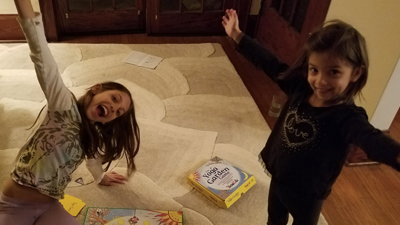 I recently began teaching a mindfulness curriculum to a group of middle school students in a Milwaukee Public School. Before I even began teaching, one of the middle school teachers said to me, “Mindfulness doesn’t work.”
I recently began teaching a mindfulness curriculum to a group of middle school students in a Milwaukee Public School. Before I even began teaching, one of the middle school teachers said to me, “Mindfulness doesn’t work.”
Hmmm…..I thought. Mindfulness is about intentionally being present in the present moment in a non-judgmental way. To say that mindfulness doesn’t work is like saying, “The present moment doesn’t work.” The statement, “The present moment doesn’t work,” doesn’t make any sense because the present moment isn’t supposed to “do” anything. The present moment is simply the present moment.
I shared this with my students and inquired about what it is that they thought that mindfulness was supposed to “do.” They shared with me that they had been told that mindfulness was supposed to make them calm, and they thought that using mindfulness was not going to “work” to make them calm.
“Mindfulness is not about being calm,” I shared with my students. “Mindfulness is about being present.” I then shared with my students a story about how I had practiced mindfulness just before teaching. I had felt nervous that morning because I had never taught this particular group of students, and instead of trying to make my anxiety “go away” (which would likely have compounded my anxiety), I turned toward it. I said to myself, “I’m feeling anxious,” and I reminded myself that it is common to feel anxious before teaching a new group of students. I brought my attention inside my body and noticed how it felt hot and tight in my neck and shoulders, and there was a buzzy sort of feeling that radiated through my entire body. I intentionally brought my attention into the soles of my feet to help myself feel grounded, and I noticed my breathing. Because I noticed that my body and my breath were indicative of a “fight or flight” response, I also chose to intentionally slow down my breathing. Regulating the breath is not a mindfulness strategy, but my mindfulness practice of observing the anxiety response in my body helped me to make the skillful choice of intentionally slowing down my breath.
The idea that mindfulness is about being calm is one that I often hear propagated by well-meaning parents, teachers in schools, and even by mindfulness instructors themselves. I think that the reason that people market mindfulness as a “strategy” to stay calm is because calm is often a by-product of practicing mindfulness. Research is clear that the long-term effects of practicing mindfulness include the ability to regulate and maintain a sense of evenness or calm in the face of stressful circumstances and emotions. However, if we practice mindfulness as a strategy to make a difficult emotion or thought go away, we may end up feeling more anxious because resisting an experience often causes a secondary wave of anxiety. If we instead embrace difficult emotions with a compassionate and mindful awareness, even if the difficult feelings temporarily increase, our long-term trajectory is toward equanimity–a sense of evenness amidst the ups and downs of life.
Even though practicing mindfulness is not about producing a state of calm in the moment, practicing mindfulness over time can help us to stay present and grounded amidst the continual ups and downs of this human experience. This evenness in the face of difficult experiences in turn sets the stage for us to make skillful choices that can help us to more fully enjoy this journey of life.
